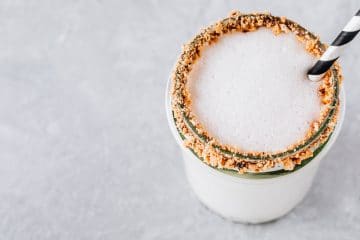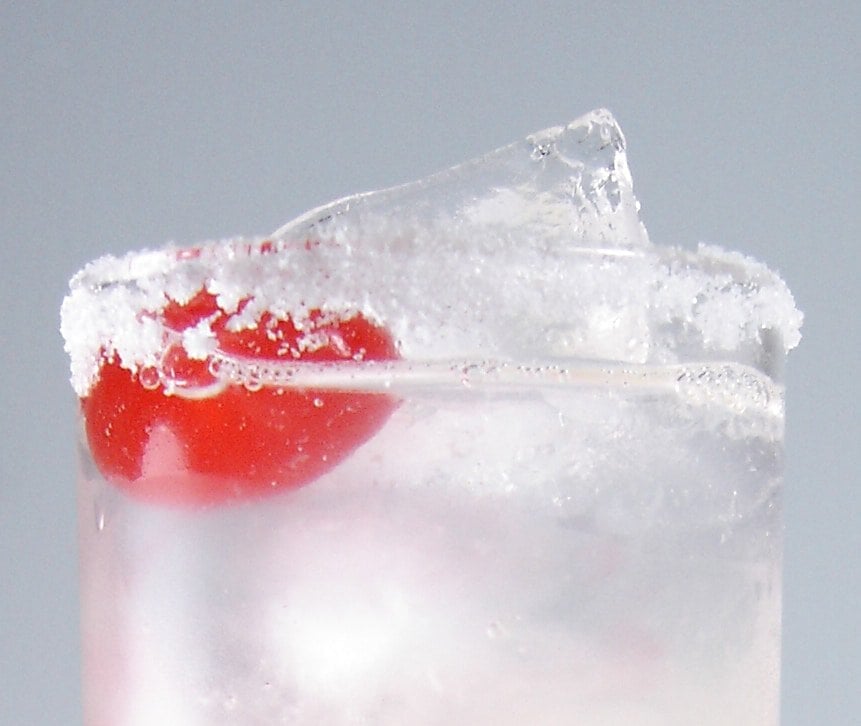High fructose corn syrup (HFCS) is all the rage these days. Actually, its more likely to cause opinionated rage, at least on the Internet. In the summer of 2006, I was going to discuss this topic but got distracted by all the boozy goodness. Then Scott, at Scott’s Rum Pages, brought up the point about HFCS in the Rum and Coke post. This reminded me that I was going to write something about this to clear up some misinformation. For cocktail creators, the key things are flavour and does HFCS mess with that. For the imbibers, I’ll look at the perceived health issues that pop up every now and then. Hopefully, I can help demystify some of this.
The amount of misinformation on this one topic amazes me, from at least chemistry standpoint. For some reason, HFCS seems to be the whipping boy of the bulging obesity epidemic. High fructose corn syrup has been blamed for everything, including diabetes, obesity, heart problems, attention deficit disorder and a whole bunch of other things. Finally, it is often gets blamed for ruining the flavour of Coca-Cola and other soft drink and products that switched from cane sugar. So could a simple sweetener really be all that bad?
First, let’s look at why HFCS has become the primary sweetener in the US.
Sugar Laws
The HFCS is mostly a problem in the United States since most other countries still import most of their sugar (cane based). The reason for this is best summed up by Sam (slkinsey) on eGullet:
“US government price supports for domestic sugar combined with tariffs on sugar imports have artificially driven up the price of sugar in the United States. Second, US government subsidies and other supports for corn growers have artificially lowered the price of corn syrup. Third, corn syrup is a liquid product and sugar is a solid product, which makes it easier to use corn syrup on an industrial basis. It also means that some re-tooling would be necessary to switch over to sugar.”
Basically, the US government makes cane sugar more expensive than HFCS through tariffs and subsidies. Many people often ask how the process for making HFCS, which is fairly complex, can be cheaper than pure cane sugar? If tariffs and subsidies were removed I doubt it would be cheaper.
HFCS and Obesity
The weight gain issue that a lot of people like to place squarely on the shoulders of High Fructose Corn Syrup is a little misleading. Here is the key point to remember: It is not what kind of sugar you ingest, but how much of it that matters. This is a key fact that is so often overlooked. Sugar consumption is far, far higher today than it was 30 years ago and a couple magnitudes higher than a century ago. It is just a fact, humans were not designed to consume so much sugar, whether it’s sucrose, fructose, maltose, lactose or glucose.
Glucose is the primary energy source for humans. We usually get it from a varied diet of grains, meat and fruit. We are not supposed to drink pure sugar, which is pretty much what we do when we drink stuff like Coke or some cocktails.
The other issue is the lack of exercise the modern human gets. We spend most of our day sitting in a chair and then we go home and sit in front of the TV (or computer). Back when we were swinging from trees we had to work a lot harder to get our daily calorie intake. Today you can walk down to your local 7–Eleven and pick up a 64 oz Big Gulp that has over 800 calories, almost one-third of your daily caloric intake! If you have four rum and Cokes in an evening that is going to add up to about 750 calories. Now if you are drinking four Pina Colada’s, say goodbye to your waste-line. It is not the high fructose corn syrup that’s killing us, its the quantity.
Take a look at bartenders, I can’t really recall seeing an obese one. Why? Because bartending is hard work. We stand for about 8 hours, move fast, lift lots of heavy stuff and sweat a lot because designers love to put lots of lighting over the bar to illuminate the bottles and broil the bartenders. Also, most bartenders don’t get a lunch break so our caloric intake is lower during our peak output times.
In HFCS Part II I’ll take a look at the science behind HFCS and explain how sugars affect our metabolism.
Did you like this post? [ratings]




